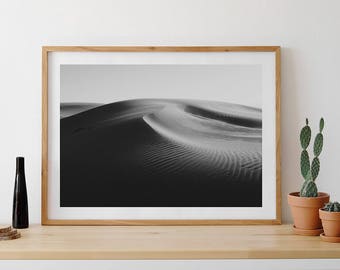

Barchan A barchan sand dune in Morocco.Ī barchan sand dune is a crescent-shaped dune. One can find these dunes in coastal deserts. Most parabolic sand dunes form near lake shore areas known as the “seas.” Other names referring to the parabolic sand dune are U-shaped, blowout, and hairpin dunes. Its formation requires moderate amounts of sand and strong winds. Parabolic dunes form when little vegetation begins to grow on the ends of a sand dune. The longest known parabolic dune ever recorded has a trailing arm almost 12 km long. On the other hand, its steep slip face points to the downwind side. The tips of the parabolic dune point towards the upwind direction. Parabolic Star sand dunes in the Death Valley, California, USA.Ī parabolic sand dune is an inverted crescent-shaped dune that has vegetation-anchored tips. Furthermore, the linear sand dunes possess long axes that extend in the direction of the movement of the sand. Most of them form in desert places where there is barren ground between the dunes. Simply put, the linear dunes form in bidirectional wind regimes. As such, they form in the presence of both the primary wind and cross-wind directions. The linear sand dunes require strong winds from two directions for their creation.

Apart from the straight shape, some linear sand dunes combine to form Y-shaped compound dunes. Miles of gravel, sand, and rocky interdune corridors separate them from each other. The dunes appear as isolated and large symmetrical peaks. A prominent feature of the linear sand dunes is the ridges. Also, they are straight, regular-spaced, and snake-like in shape. They may grow as long as 120 to 200 km such as those found in the Sahara Desert. The linear sand dunes are the longest type of sand dunes in the world. Linear Linear sand dunes in the Namib Desert. Other places which exhibit the presence of star sand dunes include Gran Desierto de Altar in Mexico and the eastern Rub’al Khali located in the Arab peninsula. Star dunes form 8.5% of the world’s total sand dunes. In other deserts, the star dunes form near topographic barriers around margins of the sand seas. An example of star dunes is in the Grand Erg Oriental of the Sahara desert. For instance, the star dunes in Badain Jaran Desert in China grow up to 500 meters tall. Besides their pyramid shape, the star dunes are the tallest sand dunes on the earth. The slip face of star sand dunes keeps changing direction depending on the flow of wind. They have three or more ridges that radiate from a center point. The star dunes grow upwards and outwards.

Furthermore, they need large amounts of sand for their formation. They form in places with multidirectional and strong wind regimes. Star Star sand dunes in the Gobi Desert, Mongolia. Also, the amount of sand available also influences the kind of sand dune formed. The velocity, turbulence, and direction of wind determine the types of sand dunes formed. Subsequently, the five major types of sand dunes are Star, linear, parabolic, barchan, and reversing sand dunes. It also helps in controlling the movement of sand. Understanding the types of sand dunes and their formation assists in the development of infrastructures like gas and oil fields. Enormous sand dunes in the Sahara Desert are called sand seas. Most sand dunes form in deserts and sandy beaches. Sand dunes cannot be formed without sand and wind. They are mounds formed by loose grains of sand blown by the wind and gathered in one place creating a small hill. Sand dunes are part of nature’s scintillating creations. Types of Sand Dunes Linear sand dunes in Oman.


 0 kommentar(er)
0 kommentar(er)
